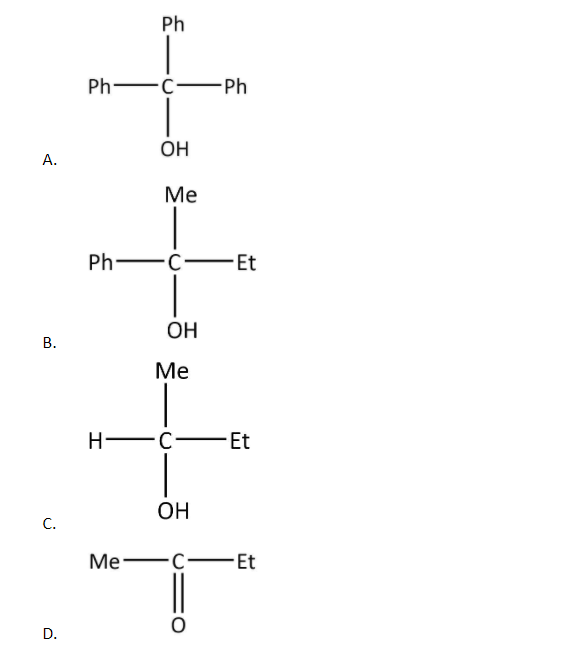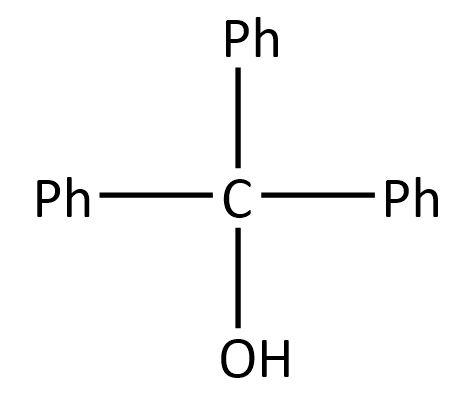
An acid halide


Answer
493.8k+ views
Hint: The product can be deduced by using the understanding of the mechanism of the reaction between an acid halide and Grignard reagent.
Step by step answer: Grignard reagent is an organo-metallic compound with a general formula
The nucleophilic carbon centre makes it highly useful as we will see further in the reaction with acid halide.
An acid halide can be represented by a general formula
In a reaction of acid chloride with excess Grignard reagent, nucleophilic carbon will attack on the electrophilic and the subsequent hydrolysis will give an alcohol as follows:

As we can see that the product contains two alkyl groups from the Grignard reagent that must be the same and one original that may or may not be the same.
Now, as in the given options, only one has the same substituents, in fact all of them are the same whereas all others have different substituents.
So, the product

Hence, the correct option is A.
Note: The normal reaction of acid chloride with Grignard reagent would give ketone only; it is only when Grignard reagent is in excess that a tertiary alcohol is produced.
Step by step answer: Grignard reagent is an organo-metallic compound with a general formula
The nucleophilic carbon centre makes it highly useful as we will see further in the reaction with acid halide.
An acid halide can be represented by a general formula
In a reaction of acid chloride with excess Grignard reagent, nucleophilic carbon will attack on the electrophilic and the subsequent hydrolysis will give an alcohol as follows:

As we can see that the product contains two alkyl groups from the Grignard reagent that must be the same and one original that may or may not be the same.
Now, as in the given options, only one has the same substituents, in fact all of them are the same whereas all others have different substituents.
So, the product

Hence, the correct option is A.
Note: The normal reaction of acid chloride with Grignard reagent would give ketone only; it is only when Grignard reagent is in excess that a tertiary alcohol is produced.
Recently Updated Pages
Master Class 10 General Knowledge: Engaging Questions & Answers for Success

Master Class 10 Computer Science: Engaging Questions & Answers for Success

Master Class 10 Science: Engaging Questions & Answers for Success

Master Class 10 Social Science: Engaging Questions & Answers for Success

Master Class 10 Maths: Engaging Questions & Answers for Success

Master Class 10 English: Engaging Questions & Answers for Success

Trending doubts
A boat goes 24 km upstream and 28 km downstream in class 10 maths CBSE

Why is there a time difference of about 5 hours between class 10 social science CBSE

The British separated Burma Myanmar from India in 1935 class 10 social science CBSE

The Equation xxx + 2 is Satisfied when x is Equal to Class 10 Maths

Chandigarh is the capital of A Punjab B Haryana C Punjab class 10 social science CBSE

Change the following sentences into negative and interrogative class 10 english CBSE




